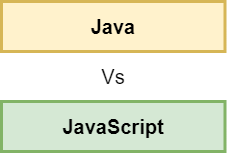Java and JavaScript are two widely used programming languages that, due to their similar names, frequently perplex newcomers. They are substantially different in their intent, grammar, and usage, despite certain similarities. In this post, we will examine the distinctive features of Java and JavaScript and highlight their unique qualities.
Java: A Strong and Flexible Language
James Gosling and his team at Sun Microsystems created the high-level, all-purpose programming language Java. It is renowned for its platform independence and ability to be written once and run anywhere. Let's examine a few crucial Java features:
1. Object-Oriented Paradigm
The idea of objects and classes is central to Java because it is an object-oriented language. Encapsulation, inheritance, and polymorphism are provided, enabling programmers to design modular, reusable code.
2. Robustness and Security
Java's robustness is a result of its strong compile-time verification and exception handling. Runtime mistakes are minimized via good typing and memory management. Additionally, it is a dependable option for creating secure apps due to its built-in security features.
3. Scalability and Performance
Large-scale applications can be created thanks to Java's scalability. Developers may create effective and high-performance software systems with dependable libraries and frameworks, such as Spring and Hibernate.
JavaScript: The Language of the Web
JavaScript, in contrast, is a simple, interpreted language mainly used for online development. Let's examine a few JavaScript characteristics:
1. Client-Side Scripting
Web pages have improved interaction and dynamic behavior thanks to JavaScript, which runs directly in the browser. Real-time updates and interactive user experiences are made possible by the ability of developers to change the Document Object Model (DOM).
2. Event-Driven Programming
An event-driven programming paradigm is used in JavaScript. It responds to user activities by carrying out particular tasks in response to button clicks and form submissions, for example. This makes it possible for developers to make responsive and interactive web applications.
3. Versatility and Integration
Not just web browsers can use JavaScript. Now that Node.js is available, developers may create full-stack applications using just one language because it can now operate on servers. JavaScript is a popular option for contemporary web development due to its adaptability and integration.
Java vs. JavaScript: A Side-by-Side Comparison
To summarize the differences between Java and JavaScript, we present them in a table:
Java |
JavaScript |
|---|---|
| General-purpose programming language used for building various types of applications, including desktop software, mobile apps, and enterprise systems | Primarily used for web development, providing interactivity and dynamic behavior to web pages |
| Statically typed language, where variable types are explicitly declared and checked at compile-time | Dynamically typed language, allowing flexibility as variable types are determined during runtime |
| Runs on the Java Virtual Machine (JVM), making it platform-independent and enabling "write once, run anywhere" capability | Executes within web browsers (client-side scripting) and on servers (with the help of platforms like Node.js) |
| Strongly object-oriented language with features like classes, objects, inheritance, and encapsulation | Supports object-oriented programming (OOP) concepts, but with a more flexible and prototype-based approach |
| Syntax resembles C/C++, with a focus on strong code structure, explicit type declarations, and the use of classes and interfaces | Lightweight and flexible syntax, often referred to as ECMAScript, supporting dynamic typing, prototype-based inheritance, and anonymous functions |
| Offers built-in support for multi-threading, allowing concurrent execution of multiple threads and efficient utilization of system resources | Primarily single-threaded, but employs asynchronous programming techniques, such as callbacks, promises, and async/await, to handle concurrent operations effectively |
| Boasts a vast ecosystem of libraries and frameworks, providing extensive functionality for different application domains, including Spring, Hibernate, and Apache Commons | Rich ecosystem of libraries and frameworks specifically tailored for web development, such as React, Angular, and Express.js |
| Requires the Java Runtime Environment (JRE) to be installed on the target system for executing Java programs | Runs natively in web browsers without the need for any additional installation or runtime environment |
| Utilized in big data processing frameworks like Apache Hadoop and Apache Spark | Commonly used in front-end web development and increasingly in server-side development with technologies like Node.js |
| Used for Android app development using the Android SDK and Kotlin programming language | Can be used for developing mobile apps using frameworks like React Native and Ionic |
Conclusion
In conclusion, Java and JavaScript are separate programming languages, each with a specific function in the world of software development. JavaScript thrives at developing interactive and dynamic web experiences, while Java excels at creating reliable, scalable programs.

Post a Comment